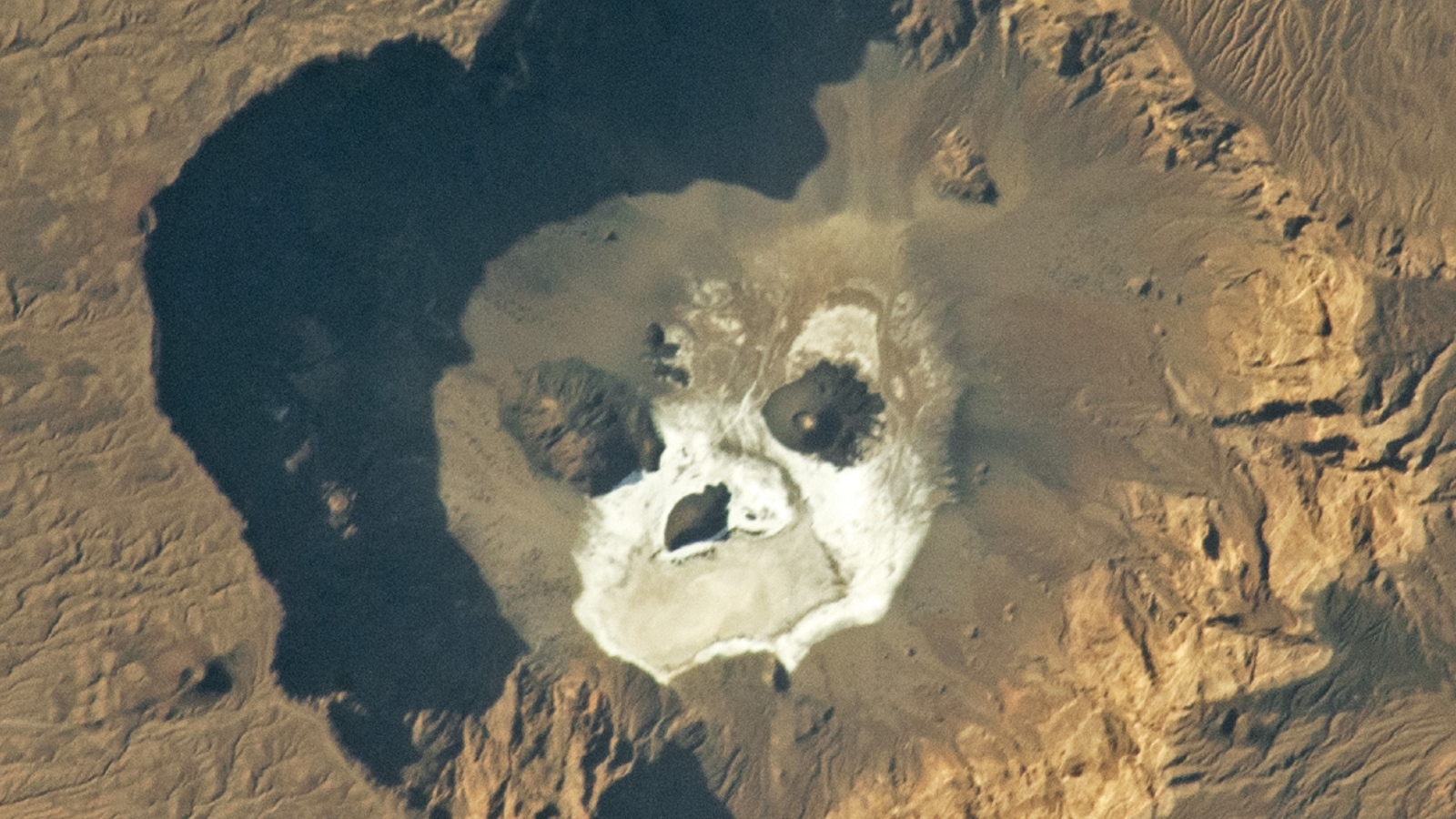
To celebrate the spooky season, NASA has released a bone-chilling photo of a creepy "skull" that appears to glower up toward space from the heart of an enormous volcanic pit in Chad.
The uncanny image was captured Feb. 12 by an unnamed astronaut aboard the International Space Station (ISS), as the spacecraft passed above the Tibesti Massif — a mountain range that stretches across the center of the Sahara Desert through Chad and Libya. The image was released on Oct. 31 by NASA's Earth Observatory.
The skull-shaped feature is located on the floor of Trou au Natron, also known as Doon Orei — a 3,300-foot-wide (1,000 meters) volcanic caldera, or crater, that was left behind by a massive volcanic eruption hundreds of thousands of years ago. The geological indentation is located just to the south of Tarso Toussidé, an even larger volcanic feature that is home to a potentially active stratovolcano. (Trou au Natron translates to "natron hole" in French, while Doon Orei means "big hole" in Teda.)
The white color of the skull's mouth, nose and left cheek is given off by natron, a naturally occurring salty mixture of sodium carbonate decahydrate, sodium bicarbonate, sodium chloride and sodium sulfate. The eyes and nose hole areas are cinder cones — steep conical hills built around volcanic vents that tower above the rest of the caldera floor. The darker area to the left of the face is the shadow cast by the tall rim of the crater, which helps give the skull its distinctive shape.
Related: Deformed skulls and ritual beheadings found at Maya pyramid in Mexico

Trou au Natron is barren and lifeless today, but experts believe it was a thriving glacial lake until around 14,000 years ago.
In the 1960s, researchers discovered fossils of sea snails and plankton beneath the pit's natron-covered floor, according to Earth Observatory. And in 2015, a follow-up expedition found algal fossils that date back 120,000 years.
Despite being at least as old as the fossils within the dried-up lake, Trou au Natron is actually one of the youngest volcanic features in the Tibesti Massif, according to Earth Observatory. The surrounding volcanoes are likely much older.
This is not the first time that a skull-shaped feature has been spotted from space. In 2016, a weather satellite image of Hurricane Matthew — a category 5 tropical storm that killed more than 600 people across the Caribbean — captured the swirling vortex cosplaying as a sinister shadowy face with a bright red eye and distinct teeth as it made landfall in Haiti.







